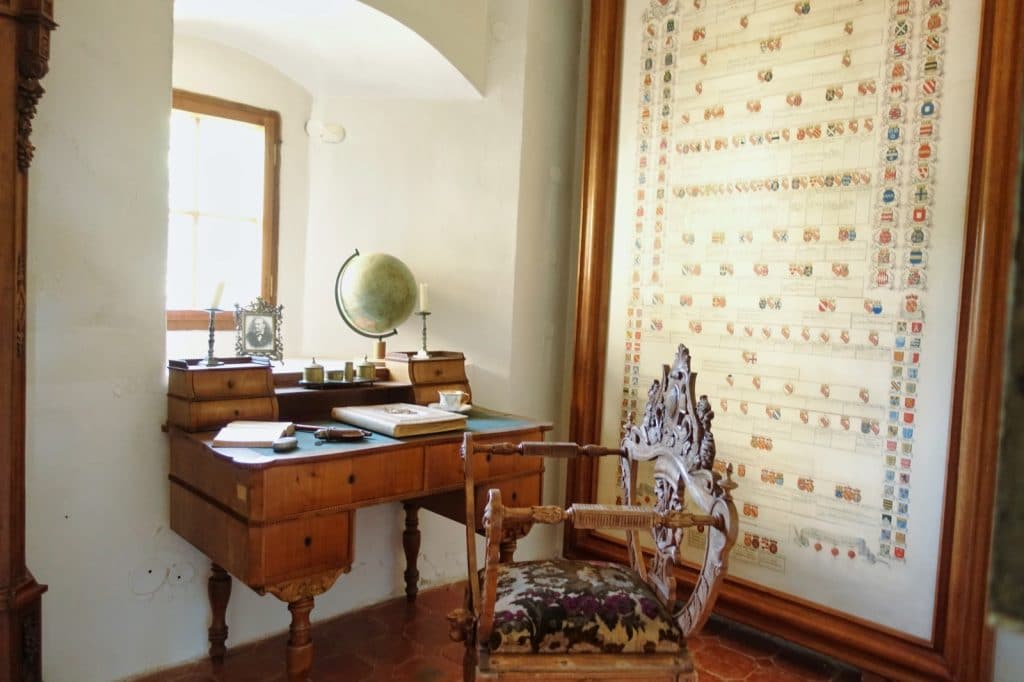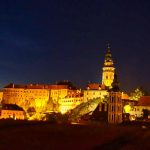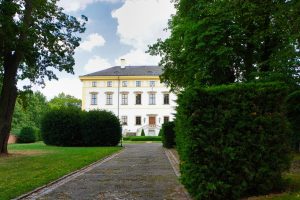Very close to Karlovy Vary in western Bohemia is the small town of Bečov nad Teplou (Petschau in German) and there you will find the Bečov Castle. The location itself is idyllic – in the valley of the Teplá River in the nature reserve of the Imperial Forest.
By car you can reach the town quickly via the E49 and already on the approach you will discover the Bečov Castle on a rockabove the town.
History of Bečov Castle
In the first half of the 14th century, the castle was probably built as a customs post on the road from Pilsen to Loket. A settlement was quickly formed at the foot of the castle and the manorial center of Peszlov was established.

In 1495, the owner of the castle, Mr. Pflug von Rabenstein, had the castle expanded. He promoted tin mining in the region and the town experienced an economic boom. After Kaspar Pflug von Rabenstein supported the Estates Revolt, King Ferdinand I confiscated the property and gave it to other nobles. When, during the counter-reform, the Protestant miners in the tin mines refused to convert, they were expelled to Saxony. This meant the economic decline of the town.
After several changes in ownership, in 1752 the Lords of Kaunitz finished rebuilding the baroque castle of Peschau below the abandoned castle. They also had new houses and a parish church built. Around 1813, the property passed to the Beaufort-Spontin family, who arranged for the landscaping of the park below the castle.

When Czechoslovakia was founded in 1918, the town was named Bečov. In 1938, the area had to be ceded to the German Reich due to the Munich Agreement, and after World War II it was reassigned to Czechoslovakia. A large part of the German-speaking population was expelled, the property was confiscated and the Beaufort-Spont family was also expropriated.

Before their escape to Austria, the Beaufort-Spont family hid in the floor of the castle chapel the St. Maurus shrine, which had been in their possession for many years. The treasure fell into oblivion. In 1984, when an American businessman wanted to pay $250,000 for the export of an unidentified art object, criminal investigators began to investigate. It was only through this that the story of the shrine was unearthed again and searched for in the castle and chateau. In 1985, the shrine was found under the floor of the castle chapel. After restoration, it can now be seen in the Bečov Castle.

Bečov Palace
The Bečov Palace is located below the castle. It was built in several stages and served as a replacement for the neglected castle complex.
We took part in a guided tour (representative rooms, the library and the palace chapel) through the palace and were thus able to gain a little insight into the history of the chateau. Unfortunately, there was no possibility to take part in a German or English guided tour during our visit. But we were given a written guide in which we could read the information.

Tickets are available at the former burgrave’s residence. The steward of the estate originally lived in the neo-classical remodelled building.
The tour of the palace begins at the stone bridge that leads to the palace. On the bridge are statues of St. John of Nepomuk and a Jesuit saint.

First you come to a room where there is a model of the castle and palace complex. Here you can learn about the history of the castle and its owners. Later, the other rooms mainly deal with the history of the palace during the time of the Beaufort-Spontin family, the last owners.
During the tour, you come into some of the palace rooms. All of them are furnished and decorated with paintings or tapestries. However, these are not the original furnishings, but rather furnishings appropriate to the time. I was impressed by the chapel of St. Peter, which today can also be used for weddings.

The tour lasts about 45 minutes.
Bečov Castle
Bečov Castle stands on a rock and is surrounded on two sides by the Teplá River. Two square towers from the first half of the 16th century form the historical core of the complex. A palace with 15 halls in the Renaissance style was part of the castle complex.
The castle was damaged during the Thirty Years’ War and was only minimally maintained.

After the palace tour, we walked along the small path around the castle grounds. Here you will find several signs with information about the castle complex. You walk along the mighty walls and have a beautiful view of the region. I would have loved to have taken a look inside the castle, for example, there are supposed to be some paintings still preserved in the manor rooms.
Palace garden
The palace garden can be visited free of charge. Large parts of it are in the former moat and so you can also walk under the stone bridge that leads to the palace.
The garden is divided into individual terraces connected by stairs. The planting is very regulated with ornaments and fixed formations. At one point there is a small wall. From there you can look into the valley and the surrounding area.
Address:
Nám 5. května 13,
364 64 Bečov nad Teplou,
Czech Republic
Opening hours:
April and October
Saturday, Sunday: 9-16 h
May, June and September
Tuesday-Sunday: 9-16h
July, August
Tuesday-Sunday: 9-17h
Admission fees:
Palace guided tour in Czech
Adults 100 CZK
Palace guided tour in foreign language
Adults 150 CZK
Other tours are offered at different prices. (See website of the provider)
Discounts are offered. With the Karlovy VARY REGION CARD you have free admission.














Leave a Reply